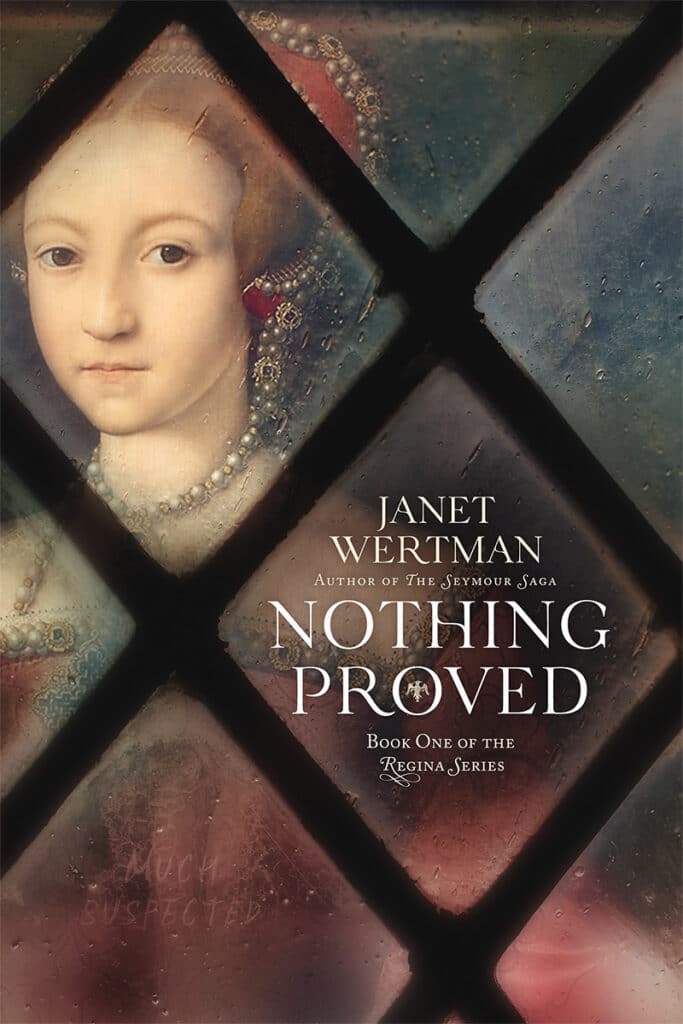
While births are generally happy things, they have to be viewed in light of subsequent events (heck, any Tudorphile will tell you that EVERYTHING must be viewed in light of subsequent events!). That makes today’s post a sad one.
First, it came at a difficult time for Katherine Parr, who had only recently discovered that her husband was trying to seduce her fifteen-year-old stepdaughter, the Princess Elizabeth. Now, Tom Seymour had managed to maintain plausible deniability for a long time – he started with ticking Elizabeth awake in the mornings, and Katherine actually joined in a couple of times to silence the people who called this inappropriate. Then he slashed Elizabeth’s black mourning gown to shreds, leaving her half naked in the gardens (at the very least, “exposed”) – again, Katherine believed her husband’s motives were innocent and she participated, actually holding Elizabeth’s arms so she couldn’t fight. But finally, when a very pregnant Katherine came upon Tom on his knees before Elizabeth and kissing her hands, she could no longer deny the obvious. Elizabeth was banished amid rumors that she too was pregnant with Seymour’s child.
There was not a lot of time for the couple to work this through before Katherine went into labor. She was relatively old for a first child (thirty-six), so this was risky to begin with and sure enough, she contracted puerperal fever. The hallucinations would have been difficult for anyone, but in her case they opened the floodgates for fury – and suspicions – to emerge. She accused her husband of having given her “many shrewd taunts” – and even hinted she thought he might have poisoned her (“My Lord, I would have given a thousand marks to have had my full talk with [Doctor] Huicke, the first day I was delivered, but I durst not, for fear of displeasing you”). Yes, yes, she repudiated these complaints during her lucid moments. Yes, yes, she wrote a will that “with all her heart and desire” made Tom Seymour her sole heir, but the cloud stuck. Tom never really recovered from the accusation (actually, he doubled down and tried to actually marry Elizabeth, but that’s a story for another post).
As a result, after losing her mother almost immediately, Mary Seymour lost her father six months later. She ended up living with Catherine Willoughby, the then-Dowager Duchess of Suffolk (there’s a blog post on that piece as well!) but after 1550 all trace of her disappears. Early biographers thought she lived until adulthood, though John Parkhurst, Katherine Parr’s chaplain, wrote an epitaph that would suggest she died around when she was around two:
I whom at the cost
Of her own life
My queenly mother
Bore with the pangs of labour
Sleep under this marble
An unfit traveller.
If Death had given me to live longer
That virtue, that modesty,
That obedience of my excellent Mother
That Heavenly courageous nature
Would have lived again in me.
Now, whoever
You are, fare thee well
Because I cannot speak any more, this stone
Is a memorial to my brief life
As I said, sad story….
***
If you like my posts, you’ll love my books! Nothing Proved is my newest, the story of Elizabeth Tudor’s journey from bastard to queen. Get it now through your favorite platform – Amazon, Barnes & Noble, Kobo, Apple, your own independent bookstore, or even directly from me!

(PS Already read it? Did you love it? Then please review it – even just a stars rating! It makes a huge difference in helping new readers find them and would mean the world to me!)

Be First to Comment